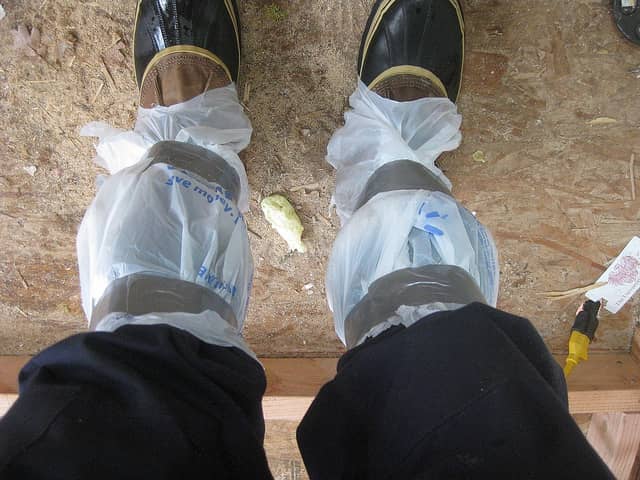5 Ways a Plastic Bag Could Save Your Life
Dave Maas 08.22.16

In a survival situation, we are often forced to adapt and overcome. You may find that time outdoors doesn’t go as planned and your return is delayed, or worse you may become injured and forced to wait for assistance. During times such as this, having a few tricks up your sleeve very well may keep you alive.
Plastic bags are something in heavy use on this planet. As a result of their constant circulation, it is possible to find one just about anywhere, including in nature. You may even have your own on you when the time comes that you need it, and here are five ways it can save your life.
- Use bags to make a signal flag. If you find yourself injured and unable to cover ground yourself, you can use a bag to draw attention to yourself. Simply affix a bag or bags to a stick to wave and be seen. If you’re not up to the task of waving, tie the bag off in two places to create a windsock that can be seen moving in the breeze.
- When it comes to first aid, plastic bags give you many options. They can be used to stabilize splints so injured limbs can be supported. In the event of a sucking chest wound, a plastic bag can be positioned over it to seal the wound. It is also possible to use them to create tourniquets as well. Even tying a bag over a regular bandage will help keep moisture out and the wound clean.
- Depending on the weather conditions with which you’re faced, wet feet can become a problem. Feet that are constantly in damp conditions become prone to skin breaks and infection. Since no one wants trench foot, affix bags over your shoes and/or your lower legs to prevent water entry into shoes. Some bags will work better for this than others and if you are hiking, tearing becomes a possibility, but something is always better than nothing.
- Speaking of staying dry, it is not just your feet than can benefit from bags. Use them to create a moisture barrier/act as a ground sheet between yourself and any ground on which you may be forced to sleep, ideally preventing issues such as hypothermia. It is also possible to use them to prevent moisture from the air from seeping into your sleeping bag by covering it with plastic.
- Cord is another possible use for plastic bags. The load-bearing capability is not there, but if your belt breaks and your pants are falling down, or you have to fix a broken guy-rope on your tent, a plastic bag could be the answer. Of course, it may be necessary to break the bag down and tie strips into cord or even tie multiple bags together to increase strength, but the option does exist.
There are many types of plastic bags ranging from grocery bags to trash bags and even sandwich bags. All of these are lightweight and fold up to fit in your car, daypack, or even pocket, so you can always carry a few without compromising much space or creating an excessive burden. Plus, as long as litter bugs exist, you might find them discarded in unexpected places but still ready to serve.
FYI: The average plastic bag is used for 12 minutes, and Americans use 30 million of them annually, plus they take 20-100 years to break down, so put yours to good use potentially saving your life.

